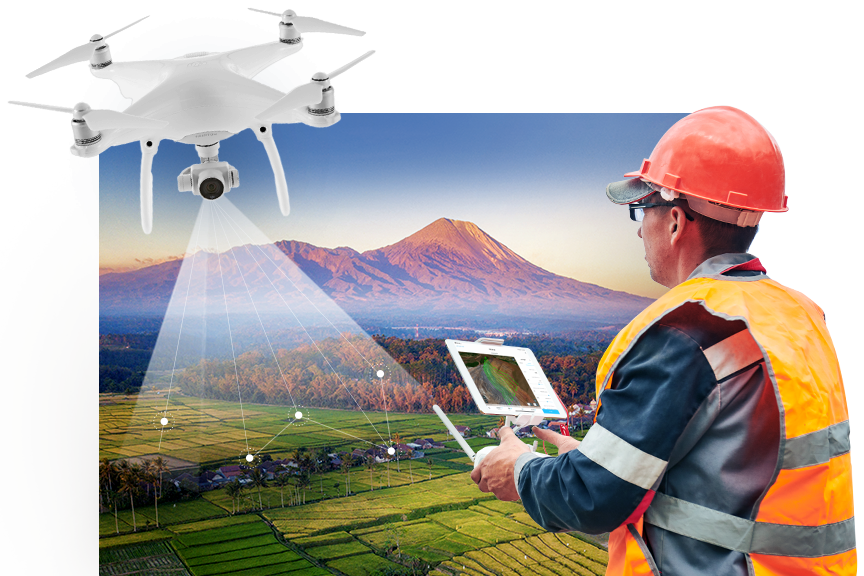In recent years, drone surveying features emerged as a new groundbreaking technology that will is reshaping the construction industry. Having the ability to capture high-resolution aerial imagery and carry out detailed land examination, drones offer a new new level associated with precision and performance that traditional surveying methods can not match. As construction projects become increasingly sophisticated, the demand regarding innovative solutions to improve accuracy, lessen costs, and speed up timelines has never been greater.

Typically the benefits of employing drones for surveying are numerous and expand beyond mere ease. From enhancing info collection processes to be able to providing clear observations for decision-making, drone technology is proving to become a game-changer intended for contractors, architects, in addition to project managers likewise. This transformation not really only streamlines workflows but also brings new possibilities for sustainable practices inside the construction sector, in the end leading to a new more productive plus environmentally friendly business. As we get deeper into just how drone surveying is usually revolutionizing construction, all of us will explore key applications, technological breakthroughs, and the long term landscape of this specific exciting field.
Benefits of Drone Surveying
Drone surveying offers numerous benefits that significantly boost the efficiency plus accuracy of building projects. One involving the primary rewards is the capability to cover great areas in the fraction of the moment it could take using traditional methods. Drones built with advanced cameras and sensors may quickly capture high resolution images and get data over great distances, allowing surveyors to complete their particular tasks much more quickly along with minimal staff members. This acceleration in the surveying practice not only enhances productivity but likewise enables project timelines to become shortened, which is crucial in a competitive industry.
One other significant advantage is the high level of precision that drone surveying provides. Modern drones are equipped with cutting-edge technological innovation that ensures exact measurements, reducing human error often linked to manual surveying strategies. This precision causes improved planning in addition to design work, as stakeholders can count on accurate topographical data and site checks. Moreover, the the use of LiDAR plus photogrammetry further enhances the accuracy of the generated routes and models, making drone surveys essential for complex assignments.
Lastly, drone surveying much more cost-effective compared to traditional surveying approaches. With lower labor costs, reduced equipment requirements, and typically the ability to quickly identify potential issues, businesses can recognize significant savings. The technology not only minimizes operational charges and also allows regarding more strategic allowance of resources. Simply by embracing drone surveying, construction companies could improve their total project management and even decision-making processes while keeping a focus about budget and deadlines.
Effects on Construction Sector
Drone surveying is considerably transforming the construction business by enhancing accurate and accelerating different processes. By using advanced Drone Surveyors Gloucestershire , structure professionals is capable of increased accuracy in measurements and site umschlüsselung compared to classic methods. This accurate reduces the possibility of errors throughout the planning and execution stages, leading to fewer costly gaps and reworks. The ability to capture comprehensive data quickly allows teams to make educated decisions and alterations instantly, ultimately enhancing productivity.
Moreover, drone research facilitate real-time overseeing of construction websites, enabling project supervisors to oversee improvement effectively. With the particular capability to make detailed 3D models and maps, building firms can evaluate the terrain and web site conditions more carefully. This insight aids in identifying possible challenges early within the project lifecycle, assisting teams plan better and allocate resources efficiently. By efficiency data collection plus analysis, drones help streamline project managing and communication between stakeholders.
Additionally, the cost-effectiveness of drone surveying makes it an attractive strategy to building companies. The lowered labor requirements and the accelerated timeline for data purchase can lead to be able to significant savings throughout project budgets. Drones also give rise to bettering safety on construction sites by minimizing the need regarding personnel to obtain potentially dangerous areas for surveying functions. As https://k12.instructure.com/eportfolios/798059/Home/Skys_the_Limit_Just_how_Drone_Surveying_is_Transforming_Construction continues to take up this technology, the competitive advantages presented by drone surveying will likely travel its widespread rendering in construction assignments of all weighing scales.
Future Trends in Drone Surveying
The continuing future of drone surveying is anticpated to be shaped by simply advancements in artificial intelligence and equipment learning. These technology will enable drones never to only record data more proficiently but also evaluate it in real-time, providing actionable insights instantly. This switch towards automated information processing will enhance decision-making in structure projects, allowing for quicker adjustments in addition to improvements based on up-to-date information.
Additionally, like drone technology continues to evolve, we can expect improvements in battery life and payload capacity. This means drones should be able to cover much larger areas and hold heightened sensors for capturing high-resolution images and various environment data. Consequently, the applications of drone surveying will broaden, covering more complex tasks such as 3D modeling and terrain evaluation, which are essential for large-scale building and infrastructure tasks.
An additional emerging trend is usually the integration associated with drones to the wider ecosystem of construction technology. Using the surge of building info modeling (BIM) and other digital tools, drones will play the pivotal role inside of synchronizing various components of project administration. By merging drone data with BIM systems, stakeholders may achieve an even more holistic view regarding projects, enhancing collaboration and efficiency upon construction sites whilst significantly reducing the risk of problems and delays.
